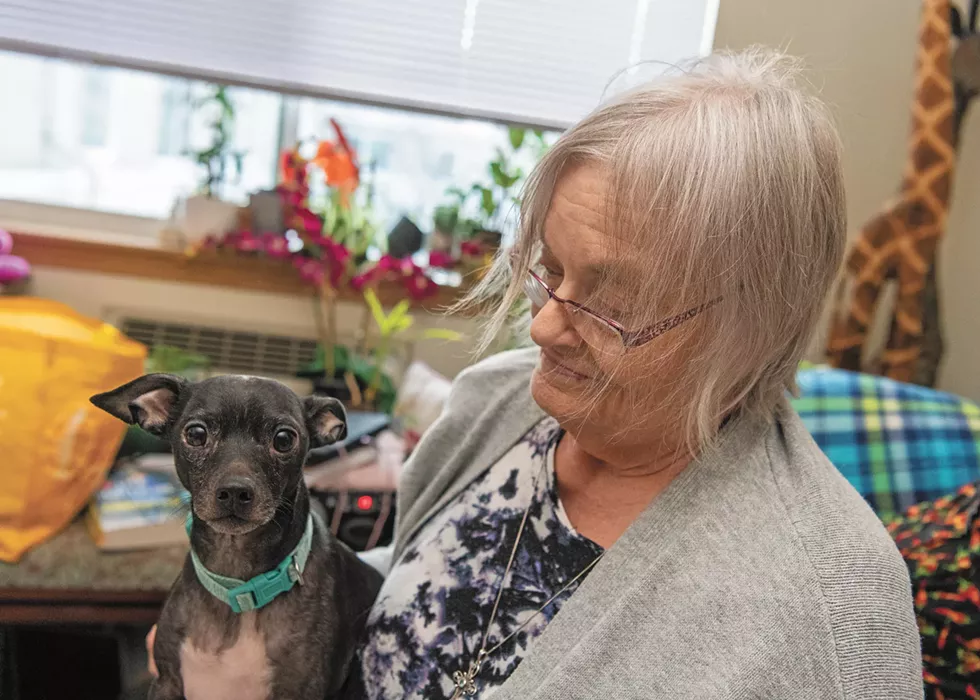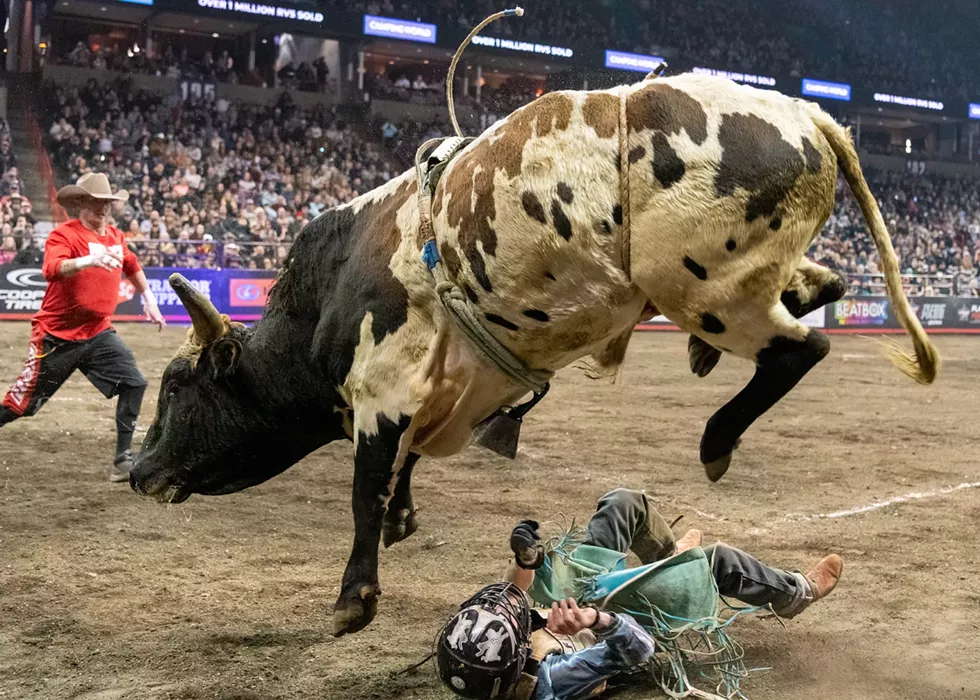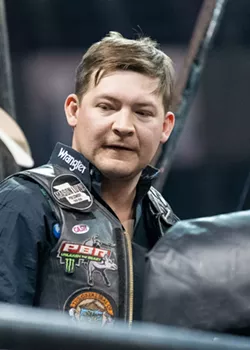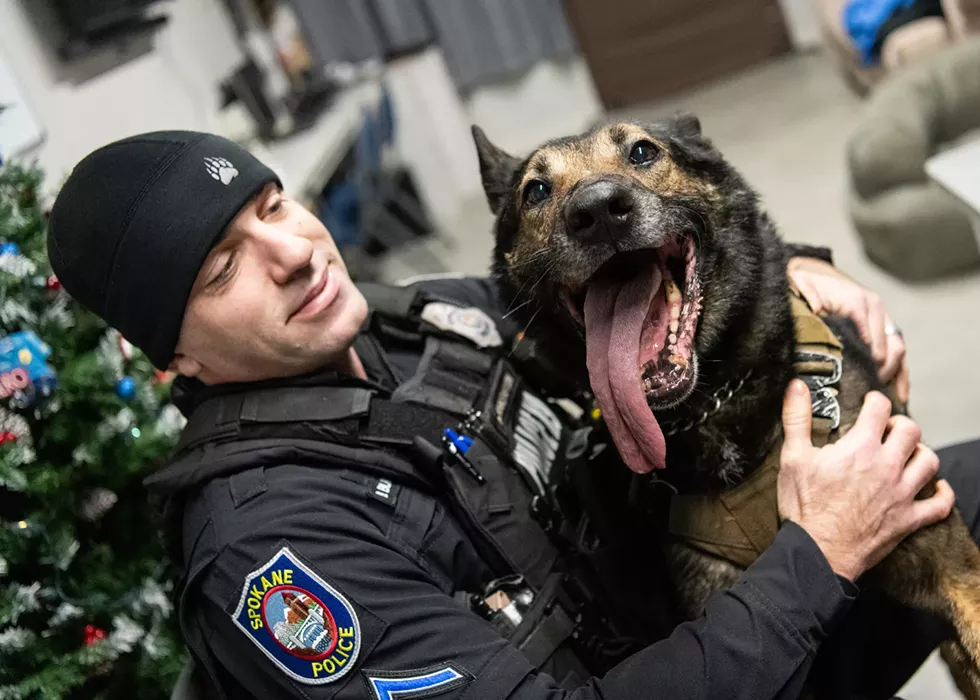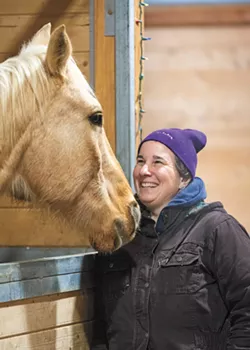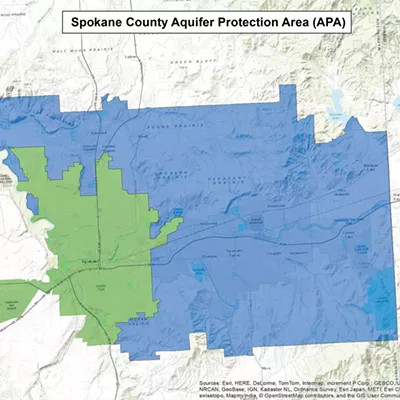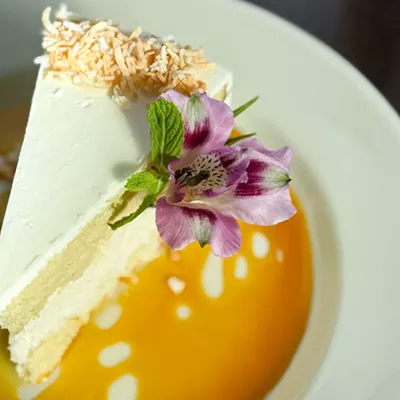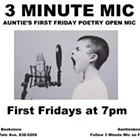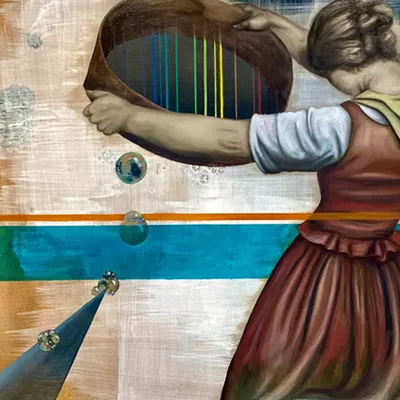My first 18 years saw a lot of pets — a cat, a dog, two rabbits, some fish, a frog and a snake. We also ate meat, which meant there was always part of a cow, pig or chicken in the fridge. Even in the suburbs, feral cats were familiar until the coyotes came into town and the city put poison out. I rode my friend's horse when she offered. My mom set out bird feeders but bemoaned the bunnies born in her rhubarb patch. My brothers targeted squirrels with their BB guns until my mom told them they had to eat whatever they killed.
Animals are a constant part of most of our lives. Some are food, others friends, and some become foe. (I'll never go camping again without a bear cannister.) Humans have been forging different connections with animals for as far back as historical records go. Cave drawings depict hunters and hunted. Some researchers link the development of civilization with the domestication of dogs.
The stories you're about to read go beyond the relationship between owner and pet — the most common way we know creatures outside of our own species. Instead, they explore what it's like to treat an animal as a professional, or a competitor, or a method to sustain life. The stories aren't exhaustive — they're mammal-centric, and don't draw from factory farming or feedlots. They're just five real people with the real animals they interact with every day. Because sometimes, something so ancient and commonplace deserves a closer look.
"Everybody has down days, especially living in a senior apartment complex. I just think whether it be a cat or a dog, they're just good companions. They're there for you."
CIRCLE OF LIFE
From the doorway, you can see the ewes grazing. The barn loft to the left is filled with a winter's worth of hay. The freezer to the right is filled with racks of ribs. Tess Hahn, the shepherdess, stands between. Everything has its season, she says, something she learned from years of studying wu xing and traditional Chinese medicine.Her real job at Bah Bah Blacktail Farm, Hahn says, is farming the sun. The light feeds the grass, which feeds the sheep. Humans can't eat sunlight or grass, but they can eat the sheep that eat the grass that eats the sunlight. Growing sheep means maximizing grass production, nurturing the land that nurtures the sheep, and shepherding people into that circle of interdependence. Hahn does it all.
Hahn loves her sheep. She drags sleds of hay through thigh high snowdrifts and scrapes out frozen food troughs to make sure they eat. She calls them each by name. Her lambing shed is full of pedigrees and carefully charted birthing stats. She knows when to give pregnant mothers the best hay. She lists on a whiteboard the five things that sheep need to be happy: food, water, safety, salt and friends.
"My agreement with them is that I take care of them all their life," Hahn says. Taking care of them for their whole life includes giving the sheep what she views as an ethical end of life, too.
Hahn is deeply studied in connections between brain, body, life and emotions. She's been a licensed acupuncturist for four decades, plus chair of the Idaho Board of Acupuncture and commissioner for the National Certification Commission for Acupuncture and Oriental Medicine. She's been putting hair-thin needles into minuscule nerve clusters for most of her life, and training others to do it, too. In other words, she has very good aim.
For Hahn, the hardest part of slaughtering a sheep is the decision beforehand. She weighs the decision carefully. In Daoism, Hahn says, the goal is to live united with the flow of nature. It is unethical to inflict pain on a sentient being. But it's also unethical to allow something dangerous or contrary to that flow to continue.
Hahn raises sheep mostly to sell as livestock to small homesteaders. She chose Katahdin sheep for their hardiness, parasite resistance and good mothering instincts. They have hair instead of wool so they don't need to be sheared. They can maintain a good body composition on grass, hay and foraging. Katahdins are especially good at helping a homestead get into the rhythm of the natural world. They help take care of the land without demanding too much from the landowner.
But sometimes, a sheep goes awry. Maybe a ram is too aggressive and dangerous to be around. Maybe a ewe can't birth or mother like she's supposed to. Hahn won't sell an unhelpful sheep to a homesteader, nor is she willing to pass on undesirable genes. On her farm, a sheep is either good or delicious. If it's not good for someone's land, it ought to be good for their table. Such is the circle of life.
Once she makes a decision to kill one of her sheep, the hard part is over. Hahn carries out her plan efficiently and compassionately. She leads a sheep through this doorway, a sheep that willingly follows her thanks to her familiar voice and pocket of snacks. Both sheep and shepherdess are relaxed as Hahn takes out a small gun from her pocket. While the sheep is munching, she puts a bullet in the walnut sized area of the brain that immediately kills the sheep.
No adrenaline floods the sheep's muscles before harvest. There is no struggle and no pain. To Hahn, it is the most natural, and only ethical, way to kill. She keeps her promise to her sheep, she puts food on the table, and wu xing — the phases of life — keeps cycling as it ought.
LOVE AND KAOS
Kaos and Desiree are both in sweatshirts. They're hairless Chinese crested dogs, and Northwest winters are a bit cold if you don't have any hair. Shadow, a chihuahua, at least has a full coat of fur to protect him.
Not that they're in any actual danger of being cold. The three dogs have one of the best places in Spokane to sleep. Every night, they nestle next to their owner, Linda Kaye Brown, on a soft armchair with plenty of blankets. The tiny dogs snooze happily. But perhaps Brown is the happiest of all.
Brown is a senior citizen living in the Clare View senior apartments on the Palouse Highway on Spokane's South Hill. She's had dogs almost her entire life, and they've only become more important to her as she's aged.
As everyone does, Brown experienced loss in her life. But her losses have been more extreme than some — losing a fiance, a husband, a home. Just last year, she lost the dog who was one of her only constants for a decade and a half. Still, the warm bodies and soft noses that snuggle into her sides every night are a comfort she doesn't want to live without. Now, she doesn't have to, thanks in part to new services that help seniors take care of their pets. Those pets, in turn, help take care of our seniors.
Brown is a recipient of Meals on Wheels, a nonprofit service that ensures seniors are getting hot, healthy meals. A new added benefit is their Nose to Toes program, which offers mobile veterinary services, too. In partnership with SpokAnimal C.A.R.E.S., vets come to seniors' homes to do basic medical care, wellness exams, nail trimmings, and microchips, or they provide transportation to a SpokAnimal clinic if further attention is needed.
Meals on Wheels and SpokAnimal are partnering because they believe holistic care for seniors includes caring for their pets. According to some studies, senior pet owners are less likely to report loneliness, depression and anxiety. Some pet owners have lower blood pressure, lower heart rates and faster recovery from stress. The American Heart Association says that dog owners of any age may be less at risk of heart disease.
Sometimes Brown doesn't want to get out of bed or go outside or eat very much.
"I used to cook and bake all the time, but I haven't even done cookies or banana bread for over a year," she says. "It's not that I can't. It's just my depression."
But Brown never loses the motivation to feed her dogs well — treats that are pure meat, and no cheap kibble with soy, grains or peas. She used to show various breeds in dog shows around the country, from sturdy Airedale terriers to the fragile-looking Chinese crested dogs, so she knows what her dogs need. When Brown adopted Shadow, he was 7 pounds overweight, which is quite a chunk of chub for a chihuahua. It took six months for Brown to get him down to a healthy weight.
She's now refocusing on her own nutrition goals, which she hopes will help alleviate back and ankle pain. She needs to be able to bend down to pick up after her dogs when they all go outside. Most days, she takes them out to the courtyard, where she usually sees other neighbors. She knows the woman who lives across from her thanks to the cat that sits in her window. Many of the residents at Clare View have pets, and Brown encourages everyone at any age to have at least one.
"I hope people would have [pets] before they get to my age," Brown says. "Everybody has down days, especially living in a senior apartment complex. I just think whether it be a cat or a dog, they're just good companions. They're there for you."
Kaos and Desiree lived with Brown when she was homeless. They know when she's feeling anxious, Brown says. Tufted ears and skinny legs rush to her if she's feeling flustered or upset. The pair always stick nearby, even if they're off leash. Shadow, true to his name, barely ever ventures out from behind her legs.
When meals are eaten, walks are over and the chill of evening settles around the building, Kaos climbs into the armchair on one side of Brown, Shadow on the other, and Desiree curls up on Brown's lap. The dogs are there as she falls asleep, and they'll be there the moment she wakes up. Together, the four friends keep each other warm, well-fed and loved.
LET'S DANCE
Dakota Louis lowers himself slowly onto the back of Black Ice. Louis has been riding bulls for 13 years, with 10 first-place finishes. It's the first competition for Black Ice. Their names flash across the big screen on Jan. 13 at the Spokane Arena — Dakota Louis vs. Black Ice — like two boxers in a boxing match. This is Professional Bull Riding, the top sport for elite human and bovine athletes.Black Ice shoves his 2,000 pounds of muscle against the side of the chute, making it hard for Louis to get his feet set. Louis tries to ease him over so he can throw his leg over the bull's right side. But it's hard to get a ton of muscle to do anything it doesn't want to do. The game is already on.
Sport animals often compete against each other — racehorses race other horses, agility dogs compete against other canines. People are around, but they're not competing against the animals. A human sprinter racing an Arabian thoroughbred would have no chance.
Only rare occasions feature a man versus beast competition. (Bull riding currently only allows men to compete.) While common rodeo events like calf roping or mutton busting seem to give humans an advantage, bull riding is the exact opposite — the only one risking limb and life is the bull rider. A bean pole of an 18-year-old can't do much to hurt a 2,000-pound bucking bull.
Louis isn't 18 anymore, but the 31-year-old cowboy from Billings, Montana, has an advantage teenagers don't. He's had over a decade to sharpen his mental toughness — his brazen confidence that he's a better athlete than the bovine underneath him.
"When I'm getting on a bull, in my own game plan mindset, I'm the best that there ever was in that exact moment, and that bull has no chance of bucking me off," he says. "You can't really think about what you're gonna do because them bulls, they're so fast and they're so smart that it's more of a reaction. I tell people it's kind of like dancing. You gotta get in timing and get in the rhythm and it's fun. But if you get out of rhythm and out of timing and out of tune, that might be a little bit rough."
Louis and Black Ice are released from the chute moments after Louis gets his body centered over the bull. Black Ice spins immediately, sending snot and saliva flying and back legs flailing through the air. His goal is to get Louis off as quickly as possible. Louis' goal is to hold on for eight seconds. But as a true competitor, Louis doesn't want Black Ice to make it easy on him. Bull riding is scored out of 100 points, 50 for the rider and 50 for the bull. The harder the ride is, the more points the bull gets, and the more overall points available for the ride.
"I want them to compete at their absolute best, too, so they can score their half," Louis says. "It's a mutual respect really."
"When I'm getting on a bull, in my own game plan mindset, I'm the best that there ever was in that exact moment, and that bull has no chance of bucking me off."
As for the bull, Louis thinks he's having the time of his life. This is what the bull was bred for. This is how he has fun. Again, you can't really get 2,000 pounds of muscle to do anything it doesn't want to do. It's a misconception that they get bulls to buck by tying a rope around their balls. The flank rope around the bull's waist just helps him extend his back legs a bit farther, "kind of like a weight lifter having a back brace to lift more weight," Louis says.
"That's one thing about our sport — the contractors that we have, they absolutely love their animals," Louis says. "PBR bulls get taken care of better than most people."
In less than three seconds, the whole thing is over. The rookie bests the veteran, and Louis is on the ground after only 2.58 seconds. As soon as Louis is down, Black Ice stops bucking and takes a trot around the arena instead, staring defiantly at the crowd. He takes in the moment before heading to his exit on his own.
Louis stays in the ring until Black Ice is finished. It's just good sportsmanship. Then Louis limps off the dirt, already preparing to face another opponent next weekend. He needs to regain the confidence to stare a ton of pulsing muscle in the eyes and say, "Let's dance."
ANCIENT TOOLS
A few weeks ago, Ciro was strangled unconscious. The K9 was doing his job, holding a suspect in place until an officer could safely arrest them. Sometimes, holding a suspect in place means keeping them occupied and distracted. In this case, the suspect was distracted by strangling Ciro.Spokane Police officer Brian Blankenstein, Ciro's handler, successfully took the suspect into custody without deploying any more weapons. Ciro (pronounced like "zero," but with an "s") regained consciousness and went back to work. The only change in his demeanor was Ciro being a little more clingy with Blankenstein's toddlers at home.
Ultimately, police dogs are tools, or special equipment, deployed when it's too dangerous to deploy human officers, Blankenstein says. But when Ciro is lying in bed with his two little kids for a bedtime story, it's hard for Blankenstein to separate the piece of equipment from the cuddle puddle.
Dogs were the first species domesticated by humans, though theories differ as to when. A grave in modern-day Israel dated to 12,000 BCE contained a human skeleton with its hand resting on a puppy skeleton. Working dogs and war dogs have been around almost as long as people have been working and waging war. Blankenstein feels like he's carrying on one of humanity's most ancient traditions.
On this night, Blankenstein and Ciro are playing fetch (surely an ancient game). The obstacle course next to the Spokane Police Academy is snowy and muddy, thanks to a winter that can't make up its mind. Ciro is half German shepherd and half Belgian Malinois, a dog sport breed known for its athleticism. Ciro darts after the tennis ball, a gray-brown blur in the evening fog.
Without raising his voice, Blankenstein speaks a simple command. "Lehni."
From yards away, Ciro freezes, looks back and cocks his head at Blankenstein. He crouches a bit, but not all the way. He's being stubborn.
"Lehni," Blankenstein repeats.
Lehni is the Czech command for "down," as in, lay down. (Most police dogs come from Central or Eastern Europe, and many police use Czech commands.) Ciro doesn't want to lay down on the wet snow. But he realizes Blankenstein is serious, and he obeys. When Blankenstein releases him, Ciro immediately pops up and dives nose first after the ball.
If a police dog is a tool, then the most crucial calibration is drive. Police dogs need to be motivated by work, not by violence. An aggressive dog puts everyone in danger, including the handler. A police dog needs to know, understand and love their job, which is to stop violence before it happens. They need an internal switch that can flip from rest to work as soon as a call comes in. They need to be driven enough to prioritize work over self-preservation and obedient enough to put themselves in harm's way, even to the point of death.
A handler needs to train the dog into this unwavering obedience without breaking its drive and enthusiasm. Blankenstein says a handler and their dog need an overwhelming amount of trust within a hierarchical order — the handler is the alpha, he says, and the dog must do what the alpha commands. But that's the only time the officer uses the term alpha. Blankenstein usually just refers to himself as Ciro's "dad."
It can be hard for "dad" to send Ciro straight into situations where Ciro will probably get hurt, like searching for an armed, hidden suspect. But at the end of the day, Ciro isn't his son. He's a very expensive, highly trained, very loved piece of equipment. And it's Ciro's job to keep everyone safe — officer, community and even suspect.
They need to be driven enough to prioritize work over self-preservation and obedient enough to put themselves in harm's way, even to the point of death.
As a distraction and a buffer between police and suspect, dogs keep humans farther apart during tense situations. More distance generally means less force, Blankenstein says. Ciro, he says, helped de-escalate two or three situations that could've led to officer-involved shootings if he hadn't been there. And dog bites, though awful, are generally less harmful than gunshot wounds. Spokane police dogs don't bite often — last year, they bit 14 suspects, 6% of the people they came in contact with.
Not all police dogs are as cuddly as Ciro is. Or, it turns out, as old. After almost nine years of service, Ciro is coming up for retirement this month. Blankenstein has pictures on his phone of a full Belgian Malinois puppy, Maverick, who will be his next partner. He's getting ready to start this relationship all over again.
But Ciro isn't going anywhere. He gets to spend the rest of his days at home with the toddlers, with the switch flipped off for good. He won't be a tool or a piece of equipment or the first line of defense. He'll just be a pillow. A best friend. A good boy. A family dog.
HEARTBEATS
Doc is blonde, about 6 feet tall, with deep brown eyes and a steady gaze. He has years of experience observing clients. The people he works with say that he has an uncanny ability to ignore what someone is saying and perceive what they're feeling instead. He's looking at me sideways, seemingly unconvinced by the words coming out of my mouth. I thought I was being articulate, elegant even. Then, Doc goes over and poops in the corner.Because Doc is a horse.
Doc is a dappled palomino at Second Chance Ranch, a nonprofit horse sanctuary run by Katie Merwick 20 minutes south of downtown Spokane just off U.S. Route 195. On Paradise Road, a herd of 40 retired sport horses graze about 30 acres of woods and hillside, a true oasis for animals often recovering from injury or abandonment.
For their whole lives, these sport horses were trained to communicate with people — jumping, lunging or pirouetting at the slightest command. They often come to Merwick injured or no longer able to compete at the highest level, but still super responsive to people.
Merwick does everything she can to restore them to health. Vets. Hay. Finding grants to pay for vets and hay. Plus, constant interaction. She visits the herd every day, bringing treats, acknowledging the name and personality of each. One horse likes to undo jacket zippers, another will nudge a spot where someone's in pain. One horse even smiles when he hears someone say hello.
Horses can feel your heartbeat from 4 feet away, Merwick says. As herd and prey animals, horses are sensitive to what others around them are feeling. What's more, horses may be able to sync their heartbeats together, she says, not only with each other, but with humans, too. The steady heartbeat of a horse can calm a nearby human. Merwick also mentions electromagnetic fields and energy radiating from a horse heart, and how it can elevate and regulate human energy. Maybe there is a reason why there are so many horse girls in the world.
A lot of this communication is physical and experiential. But if you can read a horse's physical reaction to the person nearby, it might help you articulate what that person is feeling.
That's the role of Jennifer Hammond, a Gestalt coach partnering with Merwick and the horses at Second Chance. Gestalt is a holistic approach to psychology, and Hammond uses horses to help her read what someone is experiencing physically. Horses don't care what you think, she says, they only care how you feel. If you're feeling good, they'll want to be near you. If not, they'll stay away. Horses become a pretty nifty lie detector for a coach who is otherwise reliant on what you tell them.
Before I meet Doc, I talk with Hammond about my family. She asks me to imagine my 12-year-old self. My initial reaction? No way. I don't need to do that. My inner child is fine. But I'm generally a polite person, so I stuff down the tension and start talking. I think I'm doing pretty well, if I do say so myself.
I finally get into the stall with Doc. It's vulnerable, being so close to a huge, beautiful animal. Hammond asks me to ground myself and imagine what it would feel like to feel in harmony with my family.
I finally get into the stall with Doc. It's vulnerable, being so close to a huge, beautiful animal.
To my surprise, I can't. I'm upset, more upset than I thought I'd be, either with my family or this whole exercise. Am I really being so avoidant and dismissive?
Apparently, Doc thinks so. His back is completely turned. I try to feel harmonious and lovely so he'll come over to me, but I realize I'm all twisted inside. Long moments go by as my internal embarrassment and frustration rises. I start speaking again, still calm and insightful, but Hammond reads Doc's body language toward me and says, "You're not feeling it, are you?"
Why didn't Doc come to me? Maybe Doc really was feeling my bad vibes. Or maybe I just didn't have any treats in my pocket. Either way, thanks to him and Hammond, I learned plenty of new (and not so great) things about myself.
If Doc was perturbed by my inner angst, he wasn't judgmental at all. I ended the session stroking his back, rubbing his neck, finally draping my chest across his shoulder. I could feel his heartbeat, and he could feel mine. I hugged him, and felt a little better. ♦


